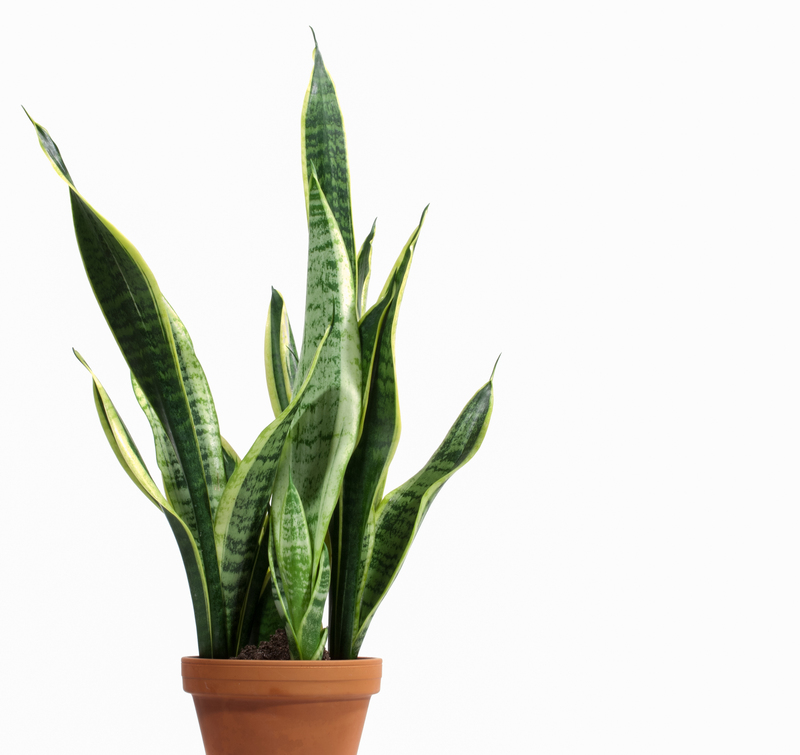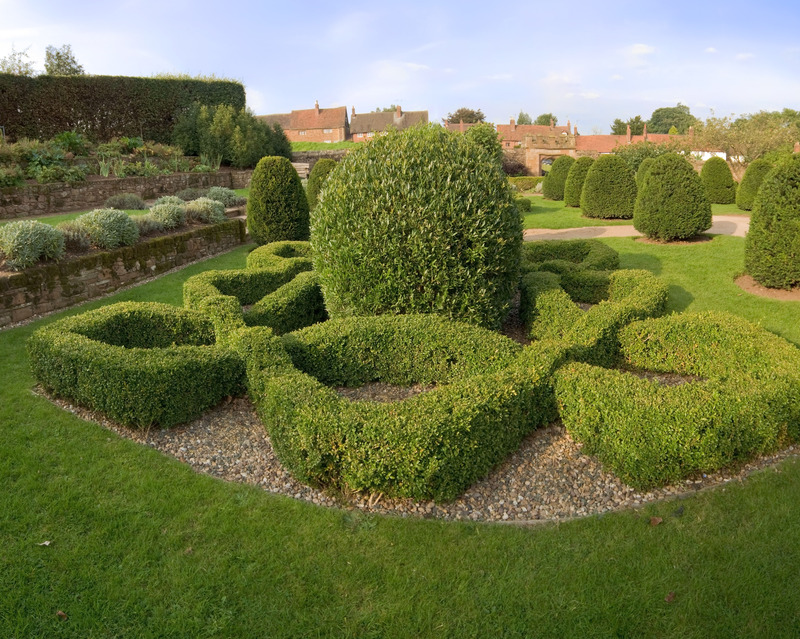Cultivating Nutrient-Rich Soil from Organic Matter
Posted on 01/07/2025
Cultivating Nutrient-Rich Soil from Organic Matter: The Complete Guide
If you dream of a thriving vegetable plot or vibrant flower beds, the foundation of healthy, productive plants starts below ground. Cultivating nutrient-rich soil from organic matter is a time-tested, sustainable strategy to supercharge your garden's performance--naturally. Whether you're a seasoned gardener or a beginner curious about soil health, this comprehensive guide will walk you through all you need to know about enriching your soil with organic material and transforming your garden's productivity.
- Benefits of Nutrient-Rich Soil
- The Importance of Organic Matter in Soil
- How Organic Matter Enriches Your Soil
- Top Sources of Organic Matter for Soil
- Step-by-Step Guide: Cultivating Rich Soil from Organic Material
- Best Practices for Soil Enrichment
- Common Mistakes to Avoid
- Maintaining Healthy, Fertile Soil
- Conclusion: The True Value of Organic-Rich Soil
Benefits of Cultivating Nutrient-Rich Soil
Why strive for nutrient-rich soil? When you build your soil with organic matter, you set the stage for decades of healthy growth and environmental benefits. Here are just a few advantages:
- Improved plant health and greater resilience to pests
- Enhanced crop yields and more flavorful produce
- Better soil structure and drainage
- Balanced moisture retention for plant roots
- Long-term sustainability, reducing the need for chemical fertilizers
- Promoting biodiversity and beneficial soil microbes
When you focus on cultivating fertile soil with organic matter, you're not just feeding plants--you're regenerating the entire garden ecosystem from the ground up.
The Importance of Organic Matter in Soil Health
So, what exactly is organic matter? In the context of soil, it's any once-living material--plants, animals, fungi, or microbes--that is decomposing or breaking down. Organic matter includes compost, mulch, leaf litter, grass clippings, manure, and even the bodies of soil organisms.
Why is adding organic matter crucial?
- Nutrient Content: Organic matter acts as a slow-release fertilizer, providing nitrogen, phosphorus, potassium, and trace minerals to plants.
- Soil Structure: Broken down plant and animal material holds soil particles together, preventing compaction and promoting aeration.
- Water Management: It increases the soil's ability to hold water during dry periods and drain excess during wet spells.
- Microbial Activity: Organic material feeds earthworms and beneficial microbes, which further enhance nutrient cycling and disease resistance.
In short, enriching soil naturally with organic matter builds a self-sustaining environment for plants and beneficial organisms alike.
How Organic Matter Enriches Your Soil
The Science Behind Nutrient-Rich Soil
Building nutrient-rich topsoil from compost and organic waste involves a web of microscopic activity. As organic matter breaks down, it transforms into humus--a stable, spongy substance that locks in nutrients and moisture. Here's how the process works:
- Decomposition: Soil organisms such as bacteria, fungi, and earthworms consume organic material and break it down.
- Nutrient Cycling: As microbes digest material, they release nutrients in plant-accessible forms, like nitrate and phosphate.
- Soil Aggregation: Organic matter helps bind soil particles, creating air pockets and improving drainage.
- Resilience: Humus-rich soil buffers against drought, erosion, and chemical imbalances.
Without a steady supply of organic matter, soil loses fertility, structure, and the ability to support vigorous plant growth. That's why continued input and management are key when you're aiming for deeply enriched, living soil in your garden.
Top Sources of Organic Matter for Soil Enrichment
There is a wealth of options when it comes to organic material for building soil fertility. Understanding your options helps you choose the best materials for your garden's needs:
- Compost: Well-rotted kitchen scraps, garden debris, and leaves, processed into a dark, crumbly, sweet-smelling amendment.
- Manure: Aged manure (from herbivores such as cows, horses, chickens, or rabbits) delivers nutrients and microbes. Never use fresh manure directly on edible crops due to pathogen risks--let it compost first!
- Leaf Mold: Decomposed leaves create a moisture-retaining soil conditioner that's ideal for woodland perennials and potting mixes.
- Green Manures (Cover Crops): Plants like clover, vetch, or buckwheat grown then tilled under to add nutrients and organic matter.
- Grass Clippings: Add back nitrogen and organic bulk, as long as they're free from herbicide residues.
- Sawdust or Wood Chips: Used for sheet mulching--though these work best after partial decomposition to avoid nitrogen tie-up.
- Straw or Hay: Used as mulch, these slowly feed soil as they decay. Check for weed seeds before applying!
Combining several sources of organic matter yields the best results, providing a balanced feast for the soil ecosystem.
Step-by-Step Guide: Cultivating Nutrient-Rich Soil from Organic Matter
Ready to boost your soil's health and productivity? Follow this practical, step-by-step approach:
Step 1: Assess Your Existing Soil
- Perform a soil test for pH, nutrient content, and texture. Home testing kits or professional labs can reveal key details.
- Observe your garden: Are plants yellowing or stunted? Is water pooling on the surface or running off?
Step 2: Choose Your Organic Amendments
- For sandy soils, prioritize compost, manure, and leaf mold for moisture retention.
- Clay soils benefit from compost and fibrous material like straw, which improves structure and drainage.
- No matter your soil, compost is always beneficial.
Step 3: Incorporate Organic Matter
- For new garden beds: Spread 2-4 inches of compost and/or aged manure over the soil and mix it evenly into the top 6-12 inches.
- For established beds: Top-dress around plants with 1-2 inches of organic matter, allowing soil fauna to integrate it naturally.
Step 4: Mulch and Protect the Soil
- Use straw, leaves, wood chips, or grass clippings as a protective mulch layer.
- Mulch keeps soil moist, regulates temperature, and feeds microbes as it breaks down.
Step 5: Encourage Ongoing Soil Life
- Minimize tillage, which can disrupt beneficial organisms.
- Maintain a moist--not soggy--soil environment.
- Rotate crops and diversity: Different root systems draw up and add different nutrients.
Step 6: Monitor and Adjust Annually
- Test your soil each year and observe plant performance.
- Add more organic matter as needed; soil building is an ongoing process, not a one-time fix.
With patience and consistency, you'll see dramatic improvements in plant health, yield, and soil workability within just a few seasons!
Best Practices for Cultivating Organic-Rich, Fertile Soil
To maximize your efforts at creating nutrient-dense soil using organic amendments, keep these principles in mind:
- Diversify Materials: Don't rely solely on one type of organic matter--blend compost, manure, leaves, and mulches for maximum effect.
- Don't Over-Till: Excessive digging can harm soil structure and microbial life. Let worms, fungi, and microbes do much of the integration.
- Feed Your Soil Regularly: Each season, add more compost or mulch as previous additions break down.
- Limit Chemical Inputs: Pesticides and synthetic fertilizers hinder beneficial soil organisms and disrupt organic matter cycling.
- Encourage Biodiversity: A healthy soil food web depends on a diversity of plant roots and organic residues.
Pro Tip:
Making your own compost is one of the most cost-effective, environmentally friendly ways to build rich soil. All it takes is the right balance of greens (nitrogen-rich materials) and browns (carbon-rich materials), occasional turning, and a little patience.
Common Mistakes in Building Nutrient-Rich Soil from Organic Matter
- Using fresh manure or undecomposed material: This can burn plants and harbor pathogens--always compost these first.
- Ignoring soil tests: Guesswork can lead to overcorrection or imbalance. Testing helps you target what your soil truly needs.
- Applying too much organic matter at once: Over-amending can suffocate roots or cause nutrient tie-up. Start with 2-4 inches per season.
- Failing to mulch: Bare soil loses moisture and organic matter rapidly. Mulch acts as a protective, slow-release shield against erosion and evaporation.
- Neglecting soil life: Avoid practices that harm beneficial earthworms and microbes.
Maintaining Healthy, Nutrient-Dense Soil Over Time
Building soil fertility with organic matter is not a one-and-done affair. To keep your garden healthy and thriving:
- Add new organic amendments each growing season--compost, mulch, or cover crops.
- Rotate crops and plant green manures annually to prevent disease build-up and replenish nutrients.
- Avoid compaction: Don't walk on garden beds. Use dedicated paths and raised beds if needed.
- Monitor for deficiencies: Watch for signs of poor plant growth and respond promptly with targeted additions.
- Invite beneficial wildlife and pollinators by planting a variety of flowering plants and maintaining "messy" edges.
Conclusion: The Lasting Value of Nutrient-Rich Soil from Organic Matter
There's no secret to creating thriving gardens with organic-rich soil: Consistency, diversity, and patience are your best tools for long-term success. When you invest in your soil--feeding it as you would your plants--you'll reap the rewards for years to come, with harvests that are abundant, flavorful, and free from chemical dependency.
Remember, every handful of well-tended, organically-enriched soil is a living ecosystem--teeming with life, locked with nutrients, and ready to nourish generations of plants (and gardeners!).
Start cultivating nutrient-rich soil from organic matter today, and watch your garden transform from the ground up!
Further Reading
- USDA Natural Resources Conservation Service: Soil Health
- University of Minnesota Extension: Organic Matter and Soil Health
- Royal Horticultural Society: Organic Matter - Soil Improvement



